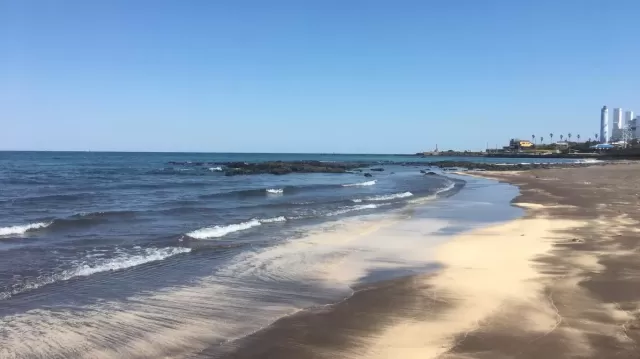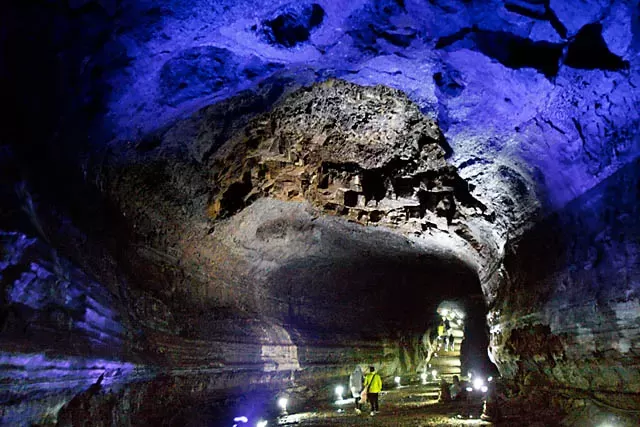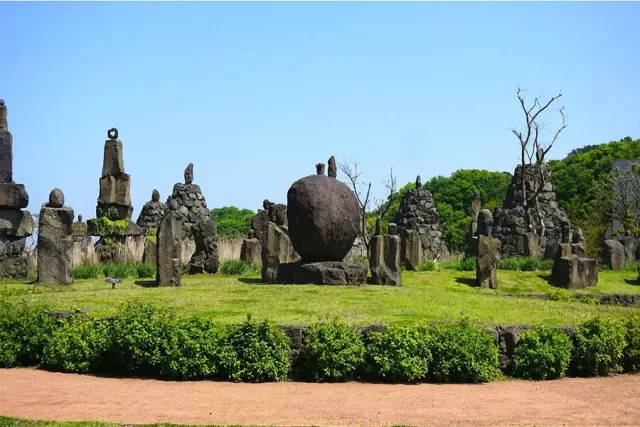Español
Six must-see destinations on Jeju Island!

If you're looking for a destination that combines lush nature, ancient culture, and breathtaking landscapes, prepare to fall in love with Jeju. Known as the "Island of the Gods," Jeju is a volcanic island located 130 kilometers off the coast of South Korea, a UNESCO World Heritage Site. Whether you're seeking adventure, culture, or simply a chance to reconnect with nature, the following six places will provide all the reasons you need to make Jeju your next destination.
Hallasan National Park:

This park is home to an inactive volcano, rising to 1,947 meters, which is not only a geographical icon but also a biodiversity sanctuary. Your Jeju adventure wouldn't be complete without conquering Mount Hallasan, the volcanic heart of the island and the highest peak in South Korea. This national park is a biodiversity haven, with trails winding through lush forests and slopes blanketed in wildflowers.
The best time to visit the park is from April to October, when the weather is most pleasant and nature is at its most vibrant. In spring, azaleas and rhododendrons paint the hillsides in vivid colors, while in autumn, maples transform the landscape into a spectacle of reds and golds. If you enjoy winter, seeing the park covered in snow is a magical experience, although you'll need appropriate cold-weather gear.
Many people recommend starting the hike at dawn (the gates open at 5:00 AM) to avoid the crowds and enjoy the morning mist as it dissipates through the trees. Remember to check the weather before you go, as thick fog can obscure the views from the summit.
Samyang Black Sand Beach:

After your adventure on Mount Hallasan, take a break at Samyang Black Sand Beach. Unlike more crowded tourist beaches, Samyang is a relatively secluded and tranquil spot, where the black volcanic sand contrasts beautifully with the turquoise sea. But its appeal isn't limited to its beauty: Samyang sand has therapeutic properties that relieve joint pain and improve circulation. Many visitors bury themselves in the sand to enjoy its benefits. The beach is ideal for swimming, light surfing, or simply relaxing with a good book. The best time to visit is between 10:00 AM and 4:00 PM to make the most of the sunshine. If you're looking for absolute tranquility, early autumn (September) offers warmer waters and fewer people. Summer (June-August) is perfect for a refreshing dip.
Bukchon Dol Hareubang Park:

Immerse yourself in Jeju culture at Bukchon Dol Hareubang Park, a park dedicated to the "Dol Hareubang" ("Stone Grandparents"), basalt statues that symbolize protection and fertility. Here, 48 figures sculpted by local artists are nestled within a gotjawal forest, a unique subtropical rainforest of Jeju. Some statues strike playful poses: one is doing yoga, another is throwing hearts—perfect for quirky photos!
The park is open from 9:00 AM to 6:00 PM (April-October) or 9:00 AM to 7:00 PM (November-March). I recommend visiting mid-morning, when the sunlight filters through the trees, creating a magical atmosphere. These statues, originally placed in front of graves to ward off spirits, are now emblems of the island.
Manjanggul Lava Tube Cave

Prepare for an underground adventure in the Manjanggul Lava Tube Cave, one of the world's largest lava tubes, formed 100,000 years ago. Only 1 km of its 7.4 km is open to the public, but it's enough to impress you: lava stalactites, basalt columns, and a 7.6-meter pillar (the tallest on the planet) will make you feel like you're in another world. The temperature inside the cave is around 10-15°C, so bring a jacket.
The cave is open from 9:00 AM to 6:00 PM, but closes on the first Wednesday of each month for maintenance. To avoid crowds of schoolchildren, I suggest visiting after midday. The artificial lighting highlights the rock formations, so you don't need to bring a flashlight. If you can't tolerate high humidity, avoid going in July and August.
Seongsan Ilchulbong:

This tuff cone, formed by an underwater eruption 5,000 years ago, is famous for its sunrises. Climb the 600 steps (about 20 minutes) an hour before dawn to watch the sun emerge from the crater, now covered in silvery grass. From the top, you can see Udo Island and the silhouette of Mount Hallasan. Access is permitted from one hour before sunrise until 6:00 PM. While you're there, take the opportunity to witness the haenyeo, women who free-swim and collect shellfish without oxygen tanks, continuing a centuries-old tradition. Their shows are at 1:30 PM and 3:00 PM off Seongsan. Before diving, they sing ritual songs and then offer their fresh catch. Spring and autumn are the best times to enjoy clear sunrises. If you visit Jeju during the New Year, you can participate in a festival that draws huge crowds.
Jeju Stone Park:

To understand Jeju's connection to volcanic rocks, visit Jeju Stone Park. According to legend, the goddess Seolmundae created the island from stones belonging to "Obaek Janggun" (500 generals). Stroll among replicas of dol hareubang (rock formations), rock formations, and a museum that explains their symbolism. The park is open from 9:00 AM to 6:00 PM, but closed on Mondays. I suggest combining this visit with Bukchon Dol Hareubang Park to compare sculptural styles. Autumn is an ideal time to visit the park, as the ochre foliage enhances the gray figures.
Plan your trip to Jeju:
- Ideal time: April-June (to enjoy the flowers) or September-October (to admire the autumn colors and enjoy a mild climate).
- Transportation: I recommend renting a car, as the attractions are scattered all over the island.
- Duration: You will need at least 4 days to explore Jeju at a leisurely pace.
Jeju is much more than an island: it's a transformative experience. A place where you can reconnect with nature, discover ancient cultures, and create unforgettable memories. Are you ready for this adventure?
